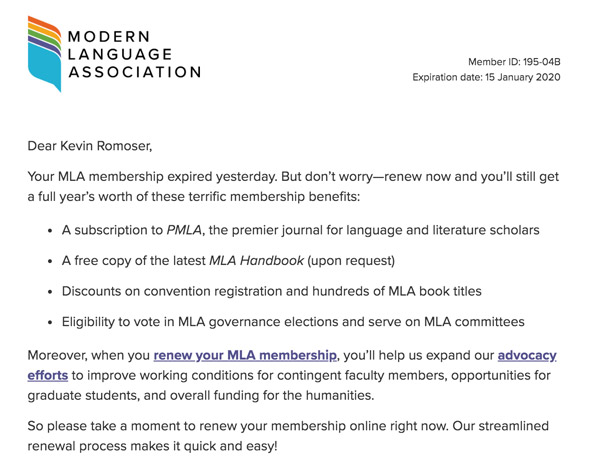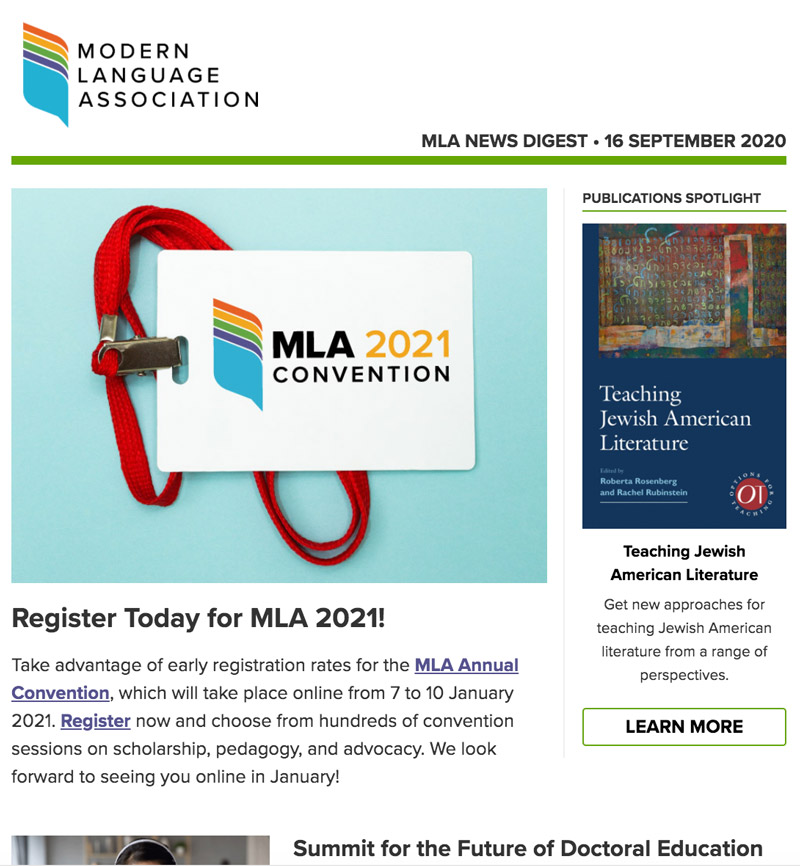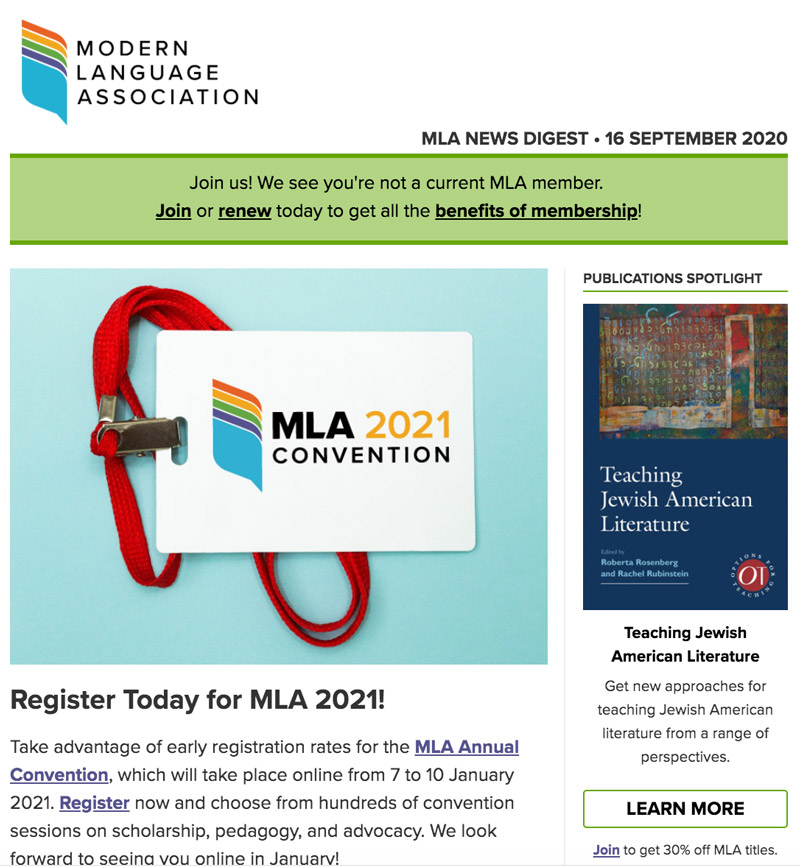MLA Marketing Automation
email development | marketing | product design | systems design
The challenge and the goal
As part of the Modern Language Association’s strategic initiative, the organization formulated a plan to build its constituent list and find new ways to engage with members on a more personal and relevant basis. We wanted to automate membership renewal reminders as well as user on-boarding flows, donation thank-you letters, and other transactional messaging. Our database and existing email service provider made it difficult to easily segment our constituents, customize our designs, and analyze our marketing efforts. We needed to find a way to make automated messaging easier to execute, faster to design, and more engaging to our members, while reducing costs associated with our ESP.
The process
We decided to completely revamp our entire email workflow, from design to send. Instead of using a SaaS ESP, we moved our email campaign functionality to our CRM, using Sparkpost as the delivery mechanism. As we have made progress on the CRM Migration project, more and more actionable data has become available for us to use in our email campaigns. I was instrumental in creating the structure, design, and execution of our new automated and one-off email campaigns.
I implemented a new email builder that built more flexible and more responsive email templates that proved more consistent across clients and devices. This reduced the time it took to build our emails and using robust templates allowed a larger group of staff to contribute to the process, reducing bottlenecks at the design and layout stage, while maintaining brand cohesion.




We also used the CRM to automate on-boarding and renewal reminder messaging. We integrated Google Analytics e-commerce data to optimize the performance of this series, which became the most successful vehicle driving membership retention. After implementing the email series, I began further optimizing our emails with more complex member data. We created custom variables that allowed for automatic customizations like conditional email elements based on season or upcoming events, suggested donation amounts, or information about members’ professional affiliations. I began conditionally adding membership promotions for lapsed members’ messages and members-only promotions to current members’ messages.


I also implemented Google Enhanced E-commerce analytics for our membership join/renew process as well as our online bookstore. Combined with our marketing automation, our detailed tracking gave us actionable insights into which campaigns and messages were performing best.
The result
Ultimately, we went from a complex, manual process of uploading static lists to our ESP every time we needed send a campaign to a largely automated, optimized, and better-performing system built directly into our CRM. As a result, staff time spent designing and sending messages declined, and we saw an immediate increase in membership retention rates after implementation.
For the first time we were also able to measure the revenue generated from each campaign, identify performance trends, and deliver personalized content based on membership status, past activity, or professional interests.